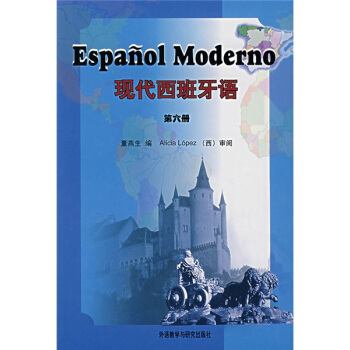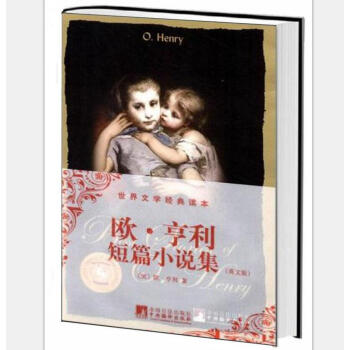

具体描述
编辑推荐
内容简介
《美国学生艺术史》由卡尔佛特学校前校长维吉尔·M·希利尔构思、设计并编写,也是他生前为孩子们写作的最后一本教材。全书共分三个部分:绘画、雕刻和建筑,共91章,收录了200多幅人类文明史上最有代表性的艺术之作,包括古埃及、古希腊、意大利、德国、荷兰、西班牙、法国、英国、美国等名家作品。希利尔先生亲自编写,并在课堂上进行试讲,不断修订。极其少见的优秀课本,清晰而引人入胜的内容、精致的艺术图片,使其不同于其他关于艺术史的教材。
作者简介
维吉尔·M·希利尔(Virgil Mores Hillyer,1875-1931)1875年出生于美国马萨诸塞州韦茅斯,他在华盛顿特区的“国会山”度过其童年,毕业于美国哈佛大学。他是美国著名教育家、卡尔佛特学校首任校长、美国家庭学校(HOMESCHOOL)课程体系创建者。作为一位教育革新者,希利尔在美国国内和国际上获得了广泛声誉和影响力。他从事教育工作的同时,亲自为孩子们编写教材,在课堂上试讲并修订,受到学校和学生们的赞誉,不少教材至今仍被学校使用。如《美国学生世界地理》、《美国学生世界历史》、《美国学生艺术史》等。他一直探索家庭学校教育理念并设计其课程体系,写作了一本家庭学校教育手册--《在家教出好孩子》,成为父母教育孩子的指南。目录
PART I PAINTING · 绘 画01 THE OLDEST PICTURES IN THE WORLD ◆ 世界上最古老的画
02 WHAT’S WRONG WITH THIS PICTURE ◆ 这画有毛病吗
03 PALACE PICTURE PUZZLES ◆ 王宫拼图
04 APRIL FOOL PICTURES ◆ 愚人画
05 JARS AND JUGS ◆ 瓶罐上的画
06 PICTURES OF CHRIST AND CHRISTIANS ◆ 基督画像和基督徒的画
07 THE SHEPHERD BOY PAINTER ◆ 牧童画家
08 THE ANGEL-LIKE BROTHER ◆ 天使般的弟兄
09 BORN AGAIN PAINTERS ◆ 再生的画家
10 SINS AND SERMONS ◆ 罪恶与布道
11 A GREAT TEACHER AND A “GREATEST” PUPIL ◆ 伟大导师和“最伟大”学生
12 THE SCULPTOR WHO PAINTED PICTURES ◆ 画画的雕刻家
13 LEONARDO DA VINCI ◆ 列奥纳多· 达· 芬奇
14 SIX VENETIANS ◆ 六个威尼斯人
15 A TAILOR’S SON AND A MASTER OF LIGHT ◆ 裁缝之子和光影大师
16 FLEMINGS ◆ 佛兰德斯人
17 TWO DUTCHMEN ◆ 两个荷兰人
18 ü AND JR. ◆ 丢勒和小霍尔拜因
19 FORGOTTEN AND DISCOVERED ◆ 遗忘与发现
20 SPEAKING OF SPANIARDS ◆ 话说西班牙画家
21 LANDSCAPES AND SIGN-BOARDS ◆ 风景画和广告牌
22 STIRRING TIMES ◆ 动荡的年代
23 A LATE START ◆ 后来居上
24 THREE ENGLISHMEN WHO WERE DIFFERENT ◆ 三个不同的英国人
25 SOME VERY POOR PAINTERS ◆ 几位非常贫穷的画家
26 THE MOST IMPORTANT PERSON ◆ 最重要的角色
27 POST-IMPRESSIONISM ◆ 后印象主义
28 EARLY AMERICANS ◆ 早期美国画家
29 MORE AMERICANS ◆ 更多的美国画家
30 TWO EUROPEAN AMERICANS ◆ 两个欧洲美国人
31 REAL-MEN ARTISTS ◆ 真正的男子汉画家
PART II SCULPTURE · 雕 刻
32 THE FIRST SCULPTURE ◆ 最初的雕刻
33 GIANTS AND PYGMIES ◆ 巨像和小雕
34 CHERUBS AND KINGS ◆ 基路伯和国王
35 MARBLES ◆ 大理石雕像
36 STANDING NATURALLY ◆ 自然的站姿
37 THE GREATEST GREEK SCULPTOR ◆ 古希腊最伟大的雕刻家
38 AFTER PHIDIAS ◆ 菲迪亚斯之后
39 PLASTER CASTS ◆ 石膏摹制品
40 TINY TREASURES ◆ 宝石小雕
41 BAKED EARTH SCULPTURE ◆ 陶土雕刻
42 BUSTS AND RELIEFS ◆ 半身像和浮雕
43 STORIES IN STONES ◆ 石头里的故事
44 THE GATES OF PARADISE ◆ 天国之门
45 A TREASURE HUNTER AND A SECRET ◆ 寻宝人和秘密
46 NEXT BEST AND BEST ◆ 最优秀和第二优秀的骑马雕像
47 FOUR IN ONE ◆ 四合一
48 CELLINI MAKES HIS PERSEUS ◆ 切利尼铸造帕尔修斯铜像
49 A.M. OR AFTER MICHELANGELO ◆ 米开朗基罗前后
50 AN ITALIAN AND A DANE ◆ 一个意大利人和一个丹麦人
51 ON A POSTAGE STAMP ◆ 邮票上的雕像
52 A LION, A SAINT, AND AN EMPEROR ◆ 狮子、圣人和国王
53 A HANDSOME PRESENT ◆ 精美的礼物
54 THOUGHTS FOR THINKERS ◆ 思想者的思想
55 OUR OWN SCULPTURE ◆ 美国的雕刻
56 OUR BEST ◆ 美国最棒的雕刻家
57 DANIEL CHESTER FRENCH ◆ 丹尼尔· 切斯特· 佛兰奇
58 WOMEN’S WORK ◆ 女雕刻家的作品
59 THE END OF THE TRAIL ◆ 路的尽头
PART III ARCHITECTURE · 建 筑
60 THE OLDEST HOUSE ◆ 最古老的房子
61 HOUSES FOR GODS ◆ 神 庙
62 MUD PIE PALACES AND TEMPLES ◆ 土饼宫殿和神庙
63 THE PERFECT BUILDING ◆ 完美的建筑
64 WOMAN’S STYLE BUILDING ◆ 女性风格的建筑
65 NEW STYLES IN BUILDINGS ◆ 建筑新风格
66 ROME WAS NOT BUILT IN A DAY ◆ 罗马非一日所建
67 TRIMMINGS ◆ 装饰物
68 EARLY CHRISTIAN ◆ 早期基督教建筑
69 EASTERN EARLY CHRISTIANS ◆ 早期东方基督教建筑
70 LIGHTS IN THE DARK ◆ 黑暗中的亮光
71 ROUND ARCHES ◆ 圆 拱
72 CASTLES ◆ 城 堡
73 POINTING TOWARD HEAVEN ◆ 直入云霄的建筑物
74 IN PRAISE OF MARY ◆ 赞美玛利亚的建筑物
75 COUNTRY CATHEDRALS ◆ 乡村大教堂
76 HERE AND THERE ◆ 欧洲各地
77 OPEN SESAME ◆ 芝麻开门
78 DOME TROUBLE ◆ 麻烦的圆顶
79 BACKWARD AND FORWARD ◆ 回顾过去,展望未来
80 THE HOMES OF ENGLAND ◆ 英国式住宅
81 TRADE-MARKS ◆ 有标记图案的建筑物
82 BREAKING RULES ◆ 打破陈规
83 THE ENGLISH RENAISSANCE ◆ 英国文艺复兴式建筑
84 FROM HUTS TO HOUSES ◆ 从茅屋到房屋
85 AL AND OL ◆ 首都和国会大厦
86 RAINBOWS AND GRAPE-VINES ◆ 彩虹和葡萄酒
87 THE SCRAPERS OF THE SKY ◆ 摩天大厦
88 NEW IDEAS ◆ 新思维
89 NONS AND SURS ◆ 非写实和超现实
90 MORE MODERN PAINTERS ◆ 更多现代画家
91 MODERN SCULPTURE ◆ 现代雕刻
精彩书摘
THE OLDEST PICTURES IN THE WORLD
世界上最古老的画
I WAS listening to the teacher, but I had my pencil in my hand. There were two little
dots about an inch apart on my desk lid. Absent-mindedly I twisted my pencil point
into one dot and then into the other. The two dots became two little eyes. I drew a circle around each eye, then I joined the two circles with a half-circle that made a pair of spectacles.
The next day I made a nose and a mouth to go with the eye and spectacles.
The next day I finished the face and added ears and some hair.
The next day I added a hat.
The next day I added a body, with arms, legs, and feet.
The next day I went over the drawing again, bearing heavily on my pencil. Over and
over again I followed the lines till they became deep grooves in my desk lid.
The next day my teacher caught me and I caught it!
The next day my father got a bill for a new desk and I got- Well, never mind what I got.
“Perhaps he's going to be an artist,” said my mother.
“Heaven forbid!” said my father. “That would cost me much more than a new desk.”
And heaven did forbid.
I know of a school that has a large wooden tablet in the hall for its pupils to draw
upon. At the top of the tablet is printed:
IF YOU JUST MUST DRAW, DON'T DRAW ON YOUR DESK,
DRAW ON THIS TABLET.
If you put a pencil in any one's hand, he just must draw something. Whether he is
listening to a lesson or telephoning, he draws circles and faces or triangles and squares
over the pad-if there is a pad. Otherwise he draws on the desk top or the wall, for he just must draw something. Have you ever seen any telephone pad that was not scribbled
upon? We say that's human nature. It shows you are a human being.
Now, animals can learn to do a good many things that human beings can do, but one
thing an animal can't learn is to draw. Dogs can learn to walk on two legs and fetch the newspaper. Bears can learn to dance. Horses can learn to count. Monkeys can learn to drink out of a cup. Parrots can learn to speak. But human beings are the only animals
that can learn to draw.
Every boy and girl who has ever lived has drawn something at some time. Haven't
you? You have drawn, perhaps, a horse or a house, a ship or an automobile, a dog or a cat. The dog may have looked just like a cat or a cat-erpillar, but even this is more than any animal can do.
Even wild men who lived so long ago that there were no houses. only caves, to live
in-men who were almost like wild animals, with long hair all over their bodies-could
draw. There were no paper or pencils then. Men drew pictures on the walls of their
caves. The pictures were not framed and hung on the walls. They were drawn right on
the walls of the cave and on the ceiling too.
Sometimes the pictures were just scratched or cut into the wall and sometimes they
were painted in afterward. The paints those men used were made of a colored clay
mixed with grease, usually simply red or yellow. Or perhaps the paint was just blood,
which was red at first and then turned almost black. Some of the pictures look as if they had been made with the end of a burned stick as you might make a black mark with the end of a burned match. Other pictures were cut into bone-on the horns of deer or on ivory tusks.
Now, what do you suppose these cave men drew pictures of? Suppose I asked you to
draw a picture of anything-just anything. Try it. What you have drawn is probably one
of five things. A cat is my first guess, a sail-boat or an automobile is my second, a house is my third guess, a tree or a flower is my fourth, and a person is my fifth. Are there any other kinds?
Well, the cave men drew pictures of only one kind of thing. Not men or women or
trees or flowers or scenery. They drew chiefly pictures of animals. And what kind of
animals, do you suppose? Dogs? No, not dogs. Horses? No, not horses. Lions? No, not
lions. They were usually big animals and strange animals. But they were pretty well
drawn, so that we know what the animals looked like. Here is a picture a cave man drew
thousands of years ago.
You know it's a picture of some animal, and it's not a cat or a caterpillar. It is some animal of the kind they had in those days. It looks like an elephant and it was a kind of elephant-a huge elephant. But its ears were not big like our elephants' ears and it had long hair. Elephants now have skin or hide, but hardly any hair. This animal we call a mammoth. It had long hair because the country was cold in those days and the hair kept the animal warm. And it was much, much bigger even than our elephants.
There are no mammoths alive now, but men have found their bones and they have put
these bones together to form huge skeletons. We still call any very big thing “mammoth.”
You've probably heard of Mammoth Cave in Kentucky. It was called Mammoth, not
because mammoths lived in it, because they didn't, but just because it is such a huge
cave.
The cave men drew other animals besides the mammoth. One was the bison, a kind of
buffalo. You can see a picture of a buffalo on our five-cent piece. It looks something like a bull. A little girl had gone to a cave in Spain with her father, who was searching for arrow-heads. While he was looking on the ground, she was looking at the ceiling of the cave and she saw what she thought was a herd of bulls painted there. She called out, “See the bulls!” and her father, thinking she had seen real bulls, cried: “Where? Where?”
Other animals they drew were like those we have now-reindeer, deer with big antlers, and bears and wolves.
It was quite dark in the caves where the cave men drew these pictures, for of course
there were no windows, and the only light was a smoky flame from a kind of lamp.
Why, then, did they make pictures at all? Such pictures couldn't have been just for wall decorations, like those you have on your walls, because it was so dark in the cave. We think the pictures were made just for good luck, as some people put a horseshoe over
the door for good luck. Or perhaps they were to tell a story or make a record of some
animal the cave man had killed. But perhaps the cave man just had to draw something,
as boys and girls nowadays draw pictures on the walls of a shed or even sometimes on
the walls of their own houses or, worse yet, on their desk tops.
The pictures made by these wild men-bearded and hairy cave men -are the oldest
pictures in the world, and the artists who made them have been dead thousands of years.
Can you think of anything you might ever make that would last as long as that?
【中文阅读】
我正在听老师讲课,可手里在玩铅笔。
我课桌的桌面上有两个相距约一英寸的小点。
我心不在焉地转动手中的铅笔,用笔尖在一个点上戳了一下,又在另一个点上戳了一下。两个小点变成了一双小眼睛。我在每只眼睛旁边画了个圈,又画了个半圈,把两个圆圈连起来,这就画出了一副眼镜。
第二天,我画了鼻子和嘴巴,配合那双眼睛和眼镜。
第三天,我画完了脸,还补充了耳朵和头发。
第四天,我又加了一顶帽子。
第五天,我添上了身体部分:胳膊、腿和脚。
第六天,我还是拿铅笔用力地画着。我一遍又一遍地描着线直到把它们深深地印在我的课桌上。
第七天,我被老师逮个正着,但我也画完了。
第八天,我爸收到了一张新课桌的账单,而我却得到了-- 算了,甭提我得到了什么吧。
“他可能会成为画家。”母亲说。
“但愿不会!”父亲答道,“那要花掉我比一张新课桌多得多的钱。”好在上帝拦阻了。
据我所知,某所学校在大厅里放置了一块大木牌,专供学生涂鸦。木牌上方刻着这样一句话:
如果你想画画,就在这块牌子上画吧,
只是不要在课桌上画。
如果把铅笔放在某人手中,他就一定会画点什么。他不管是在听课还是在接电话,只要手头有本便签簿,他就会在上面画些圈圈啦,脸蛋啊,或者是三角形和正方形什么的。要不他就会在课桌或墙壁上涂画,因为他总得要画点什么。你看见过没有被乱涂乱画的电话簿吗? 这就是人的本性。这表明你是一个真正的人。
如今,动物可以学做许多人类能做的事情,但有一件事动物学不会,那就是画画。狗能用两条腿学走路,甚至帮人取报纸;熊能学会跳舞;马能学会数数;猴子可以学用杯子喝水;鹦鹉可以学舌;但是只有人类才能学会画画。
每一个男孩或女孩都在童年时代的某个时候画过些什么。难道不是吗?你或许画过马或房子,船或汽车,狗或猫。这狗被你画得就像猫,或像一条毛毛虫,但即便如此,你还是比任何动物都强。
甚至生活在很久以前的原始人也能画画。那时还没有房屋,他们全身长着长长的毛发,只住在洞穴里过着几乎和野兽一样的生活。那时候没有纸和笔。他们在穴壁上画画。这些图画没有装裱悬挂在墙上,而是直接画在洞壁和洞顶上。
这些图画有的只是涂鸦或刻在洞壁上,有的是后来才画上去的。当时人们所用的颜料是由一种掺杂着动物油脂的有色粘土混合制成的,通常只有红黄色,或者就用鲜血做颜料,开始是红色,后来几乎就变成了黑色。有些图画看起来就像是用一根烧焦的木棒头画的,就像我们用一根烧过的火柴头画一个黑色标志。还有些图画是刻在骨头上的,比如鹿角或象牙。
现在来猜想一下这些穴居人画的是什么?如果让你随意画幅画--也就是画什么都行。试试看吧。你画的可能是以下五种事物中的一种。我首先猜的是猫,第二次猜了帆船或汽车,第三次猜的是房子,第四次猜的是树或花,最后才猜了人。还会猜出其他什么呢?
其实,穴居人只画了一种东西。不是男人,不是女人,不是树、不是花,也不是风景。他们主要画的是动物。你认为他们画的是哪种动物呢?狗?不,不是狗。马?不,不是马。狮子?不,也不是狮子。他们通常画的是一些大型和奇特的动物。但这些动物都画得栩栩如生,这使我们知道这些动物的长相。下图是一个几千年前的穴居人画的画。
我们看得出这画的是某种动物,但不是猫,也不是毛毛虫。那是他们那个时代特有的某种动物。它看起来像一头象,而它的确就是象的一种--巨象。它的耳朵没有我们现在的象那么大,还长着长长的毛发。现在的象有兽皮或毛皮,但几乎没有毛发。我们把图上的动物称为猛犸(又名毛象)。毛象的毛发很长,因为那时候天气寒冷,而长毛可以保暖。但它比我们现在的象大很多很多。
如今猛犸早已绝种,但人类已经找到了它们的骨头,并把它们放在一起拼成了一个大型骨架。我们现在仍将庞然大物称作“猛犸”。你可能听说过肯塔基州的猛犸洞穴。它被称作猛犸洞并不是因为猛犸在这洞里住过,实际并没住过,而仅仅因为这是一个非常大的洞穴。
除了猛犸,穴居人还画过其他动物。其中有种野牛,就是水牛。水牛的图片可以在美国的5 分硬币上看到。它看起来像一头公牛。在西班牙,有个小女孩曾和她的父亲一起走进一个洞穴,他们按着箭头,爸爸在地上寻找,小女孩却盯着洞顶打量。她看见洞顶上画了一群她以为是公牛的动物。她大喊一声,“看,公牛!”她爸爸还以为她看见了真的公牛,喊道:“在哪?在哪?”
他们画的其他动物和我们今天有的这些动物差不多--驯鹿、长角鹿,还有熊和狼。
穴居人画画的穴洞十分昏暗,因为那儿根本就没开窗。唯一的光亮就是某种壁灯发出的昏暗的光。那他们干吗要画画呢?这些图画不可能仅仅只是为了装饰洞壁,就像我们在墙上挂画一样,因为洞穴里实在是太暗了。我们认为穴居人画画是为了祈求好运,就像人们把马蹄铁放在门头上企盼吉祥是一样的。或者他们是要讲述一个故事或就是记下捕杀的某种动物。或许他们不得不画画,就像现在的孩子们在小木屋,甚至有时候在自家的墙上画画一样,或干脆就在课桌上画。
这些原始人--多须长毛的穴居人-- 画的是世界上最古老的画。但这些艺术家早在几千年前就去世了。你认为你所制作的任何东西能像那些画一样持久吗?
……
前言/序言
用户评价
坦白说,我购买这本书主要是冲着它的学术严谨性去的,但惊喜地发现它在普及性上也做得非常到位。对于我这种非专业出身,但对艺术有浓厚兴趣的读者来说,理解那些复杂的艺术理论和批评话语常常是一个障碍。然而,本书的行文流畅,逻辑清晰,即便是介绍立体主义的流变或者抽象表现主义的非具象逻辑时,也总能找到一个非常贴切的视觉例子来辅助说明。双语对照的优势在这里再次体现,当某些概念的中文翻译略显生硬时,翻看英文原文,常常能立刻领悟到作者最初想要表达的那种微妙的语感。这使得学习过程变成了一种享受,而不是枯燥的背诵和记忆,极大地降低了理解美国现代与当代艺术的门槛。
评分这套书的魅力在于它成功地打破了传统艺术史的地理藩篱。长期以来,欧洲艺术似乎占据了绝对的主流话语权,而美国艺术常常被边缘化或被简单地视为现代主义运动的一个“分支”。但通过阅读这套书,我意识到美国艺术史本身就是一个复杂、多源、充满内部张力的叙事。它涵盖了从原住民艺术的深厚遗产,到黑人艺术家群体的独特贡献,再到女性艺术家如何在保守的社会结构中艰难突围的心路历程。尤其是一些关于“边缘群体”艺术的章节,它们的论述视角非常新颖,不再是简单的补充材料,而是被提升到了与主流叙事同等重要的地位,展现了美国文化多样性的真实面貌。这种包容性和多维度审视问题的态度,才是真正体现了一部成熟艺术史著作应有的格局和深度。
评分我通常对艺术史书籍的阅读体验是比较挑剔的,很多作品要么过于学术化以至于晦涩难懂,要么过于通俗而牺牲了批判的深度。但这一套书在平衡性上做得非常出色。它没有沉溺于冗长的社会背景描述,而是直接聚焦于作品本身及其背后的思想张力。例如,在探讨20世纪初现代主义的涌入时,作者并未简单地将之描绘成一股不可阻挡的洪流,而是细致地剖析了美国本土艺术家们如何“吸收”和“重塑”欧洲的抽象、立体主义等观念,使其服务于美国本土的现代性表达,比如摩登都市的节奏感或地域主义(Regionalism)的反思。这种‘辩证’的叙述方式,使得那些我们以为已经很熟悉的艺术运动,在书中又焕发出了新的生命力。版面的设计和插图的选择也颇为考究,色彩还原度很高,这对于研究视觉艺术的读者来说是至关重要的细节,足以感受到出版方在制作上的用心程度。
评分这套书真是让我大开眼界,不仅仅是那些我们耳熟能详的文艺复兴巨匠,更深入到了美国本土艺术的根源和发展脉络。我特别喜欢它在处理早期殖民时期艺术时所展现出的那种细致入微的考察,没有简单地将其视为欧洲风格的拙劣模仿,而是努力去挖掘在那个特定历史环境下,艺术家们如何应对材料、文化和信仰的挑战,塑造出具有早期美洲特色的视觉语言。书中对新世界早期画像和静物画的分析,让我对“美国艺术”这个概念有了更深层次的理解——它不是一个静止的标签,而是一个不断与地域、移民、以及本土经验碰撞融合的过程。译文的质量也值得称赞,双语对照的优势在理解那些晦涩的艺术史术语时体现得淋漓尽致,尤其是在处理一些特定的历史语境词汇时,对比原文能让人对原作者的精确用意把握得更到位。总的来说,它为想要系统了解美国艺术发展轨迹的读者提供了一个非常坚实且富有洞察力的起点,远超出了我原先对一本“艺术史”教材的期待。
评分阅读完这套书的后半部分,尤其是在涉及波普艺术、极简主义以及后现代转向的章节时,我深感震撼。作者对艺术如何从精英走向大众,以及艺术界如何反思自身边界和体制的探讨,非常具有穿透力。书中对安迪·沃霍尔作品的分析,不只是停留在对流行文化的挪用上,更是深入挖掘了其背后关于消费主义、名人文化和艺术品价值构建的深刻质疑。而且,它很敏锐地捕捉到了美国艺术在后现代语境下对“真实性”和“原创性”的不断解构和重塑。这套书的覆盖面之广,从早期的风景画到近期的观念艺术,构建了一个连贯而又充满转折的艺术长廊。它不仅仅是一部艺术史,更像是一部美国社会文化变迁的视觉档案,读完后让人对当今世界的视觉文化现象有了更为深刻的背景知识和批判性视角。
评分买来送给朋友的小孩看看。
评分“博物馆里的中国”一书内容丰富、语言生动,集知识性、趣味性于一体,是小读者了解我国传统建筑文化的一部佳作。
评分东西很好,下次再来买!!!!!!
评分质量还可以,纸质较差
评分太抽象了,三年级以后看
评分六一儿童节给朋友买的
评分先借了中文版,看完真心觉得写的不错,才给儿子买了双语版。可惜是黑白版的,艺术史还是应该买彩图版的比较好。
评分给我和孩子囤的书,以后有时间就看,所说这套书是俞敏洪力荐的,适合各个年龄段!
评分书本印刷质量不错,
相关图书
本站所有内容均为互联网搜索引擎提供的公开搜索信息,本站不存储任何数据与内容,任何内容与数据均与本站无关,如有需要请联系相关搜索引擎包括但不限于百度,google,bing,sogou 等
© 2025 book.tinynews.org All Rights Reserved. 静思书屋 版权所有









![牛津英文经典:社会契约论(英文版) [Discourse on Political Economy and the Social Contract] pdf epub mobi 电子书 下载](https://pic.tinynews.org/11886763/56dfebd0N448142b9.jpg)










